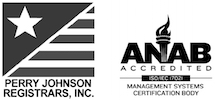EMI Shielding for Touch Screens
Touch screen interfaces integrated into electronic displays are now common in marine, military, and mobile applications. The high-ambient-light readability and electromagnetic compatibility (EMC) is most efficiently achieved through enhancements to commercial-off-the-self (COTS) components in these demanding environments. However, since the face of a display needs to be transparent, electromagnetic radiations emitted by the device or surrounding environment may damage the electrical components within the unit. To address the issue, touch screens integrated into display assemblies can be configured to provide electromagnetic interference (EMI) shielding ground plane and contrast-enhancement features to prevent EMI.
For EMI shielding, a typical touch-screen-enabled display assembly is constructed with a Faraday cage- a continuous electrically conductive enclosure that surrounds the equipment and attenuates transmitting electric fields to the desired level. Common EMI shielding techniques for adding conductive properties to an optical substrate include the integration of transparent conductive coatings or a fine conductive grid of wires. The properties of transmittance and conductance can be adjusted or tuned to fit a specific application. All transparent conductive materials require an optical substrate as a carrier. The EMI shields will attenuate the visual light transmittance from 3% to 55%, depending on the specific technology and configuration employed.
Transparent thin-film conductive coatings offer excellent optical and moderate EMI shielding properties. Typical transparent conductive films include transparent conductive oxides (TCOs) such as indium tin oxide (ITO) and metal alloyed films. Increasing the conductivity of the coating will increase the average EMI attenuation level over the frequency range of 100 kHz – 20 GHz. Unfortunately, there is an inverse relationship between light transmittance and conductivity. A low-resistance coating on the glass will offer high performance but will cost more because it is deposited in a batch vacuum process rather than a web or continuous process. Additionally, most TCOs can be fully integrated into a multi-layer dielectric stack as part of a broadband antireflection (AR) coating. This is commonly referred to as “index matching.” An AR coating reduces surface reflection losses and increases transmitted light.
The EMI shield can be applied to the front or rear surfaces of the touch screen. Care must be taken to not interfere with the resolution or sensitivity of the touch screen if the touch screen itself must be shielded. Thin-film conductive coatings applied to the rear surface of the touch screen offer a simple, cost-effective way to achieve EMI attenuation but they do not prevent susceptibility or radiation of the touch screen itself. The degree of index matching of the rear surface is dependent upon the contrast required or the amount of rear surface reflection that can be tolerated. Grounding the conductive coating can readily be achieved by using an electrically conductive pressure-sensitive adhesive (PSA) and attaching the touch screen to a metal LCD frame, bezel, or housing to complete the Faraday cage. A conductive adhesive or gasket can also be used to termite the CGP. EMI/EMC performance will not change when the grid orientation is adjusted. The necessity of creating a good “optical fit” makes the remote design process more challenging compared to designing with transparent film processes. Empirical optical testing is required.
Touch screens are becoming more and more prevalent as the user interface of choice for high-ambient-light readability applications. COTS touch screens can be optimized to improve both environmental and optical properties. Knowing that the performance of COTS touch screens can vary, it is best to start with a product that has properties close to those required in the end application and to select touch-screen attributes that will not interfere with any required enhancements. To minimize EMI in the final product, shielding enhancements can be readily incorporated into either the front or rear surface of the touch screen using a lamination process of secondary materials. Transparent thin-film conductive coatings are recommended for applications requiring low levels of EMI shielding, low package thickness, and low cost. Fine conductive grids are the material of choice for very high levels of shielding. Both technologies should be considered for moderate levels of shielding. Because there is no one solution that works best for all applications, each should be considered unique and the particular EMI enhancement should be selected for specific end-program suitability.




